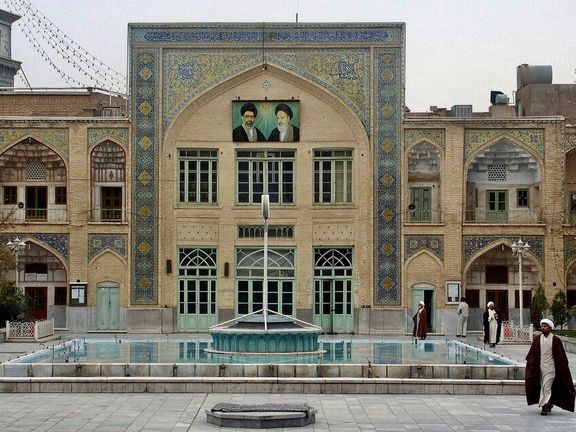Inside Qom Seminary, Iran’s political and spiritual powerhouse

Nestled in the heart of Iran's second holiest city, the century-old Qom Seminary is the most influential Shi'ite clerical institution in the country and arguably the world.

Nestled in the heart of Iran's second holiest city, the century-old Qom Seminary is the most influential Shi'ite clerical institution in the country and arguably the world.
As the academic and spiritual powerhouse of Shi'ism, the Qom Seminary plays a central role in shaping Iran's religious elite and, by extension, much of the country's theocratic structure. Beneath its religious facade, however, lies a vast, opaque network of political influence, financial entanglements and government control.
The seminary consists of nearly 60 schools, each established and operated either by high-ranking Shi'ite clerics—referred to as sources of emulation—or by state-affiliated institutions.
Tens of thousands of students study in Qom Seminary’s various schools, including thousands of foreign nationals from across the Shi'ite world—such as Lebanon, Iraq, Afghanistan, Nigeria and even China—drawn by Qom’s global religious stature.
Many of the country’s most influential officials and politicians who possess strong religious credentials hail from the Qom Seminary.
Roots in tradition and power
In addition to Qom, there are hundreds of Shi'ite seminary schools in Tehran, Mashhad, Isfahan and other cities across Iran. All of these institutions operate within a framework that is increasingly shaped and influenced by the state.
At the center of this framework is the Supreme Council of Seminaries, an official policy-making body responsible for overseeing curricula, setting educational standards, and managing the administration of seminaries.
The Council’s power is bolstered by the fact that its members are appointed by both Iran’s Supreme Leader, Ali Khamenei, and senior clerics who align with his religious and political interests.
Sacred duties, government funding
For centuries, seminary schools operated independently, funded primarily through religious dues called khoms or charity payments, zakat, that believers pay to their chosen source of emulation and the revenues from charitable endowments that they control.
These funds allowed sources of emulation to run their schools, pay stipends, and provide lodging for their students. This fostered a decentralized clerical tradition where independent scholars could thrive without state interference.
Since the 1979 Islamic Revolution, the state has consolidated its control over the administration of seminaries, incorporating them into the broader framework of governance and state-sponsored religion.
Government funding of seminaries is extensive but fragmented. Instead of channeling money through a single institution, the state allocates funds to a range of entities.
These include the Administrative Center of Seminaries, the Islamic Propaganda Organization, and various entities dedicated to supporting students and faculty members. Seminary students now routinely receive state-funded stipends, health insurance and other welfare benefits.
Khamenei’s grip on seminaries
Supreme Leader Ali Khamenei’s office provides additional financial support to selected seminary entities across the country. The details of these contributions—including amounts and recipients—are seldom made public, adding to seminaries’ overall lack of financial transparency.
His influence over Qom and other seminaries extends beyond funding and appointments. His office also uses intelligence surveillance, ideological monitoring, and strategic institutional control to maintain dominance over the clerical sphere.
Training the clerical elite
Becoming a fully qualified Shi'ite jurist or mujtahid—someone capable of independently interpreting Islamic law (ijtihad) -- typically requires at least two decades of intensive study in fields such as jurisprudence or fiqh, philosophy, logic and the Arabic language.
To be formally recognized as a jurist, a candidate needs the endorsement of a prominent clerical authority—often a source of emulation or another senior jurist.
Once recognized, a jurist can issue legal opinions or fatwas and may, in some cases, be acknowledged by peers and followers as a source of emulation.
Shi'ite laypeople are expected to follow the religious rulings of a living source of emulation, making these clerics deeply influential figures in both the religious and political spheres of Shiite-majority societies, especially in Iran.
Women in seminaries
While the leadership of seminaries remains exclusively male, more than 3,000 female seminarians currently study in a dozen gender-segregated schools in Qom Seminary alone. Their education is primarily focused on training women to teach religious principles—especially those related to women’s issues, family life, and Islamic ethics.
In rare instances, women have been permitted to attend advanced-level lectures typically reserved for male students. However, only a small number have ever attained the title of jurist.